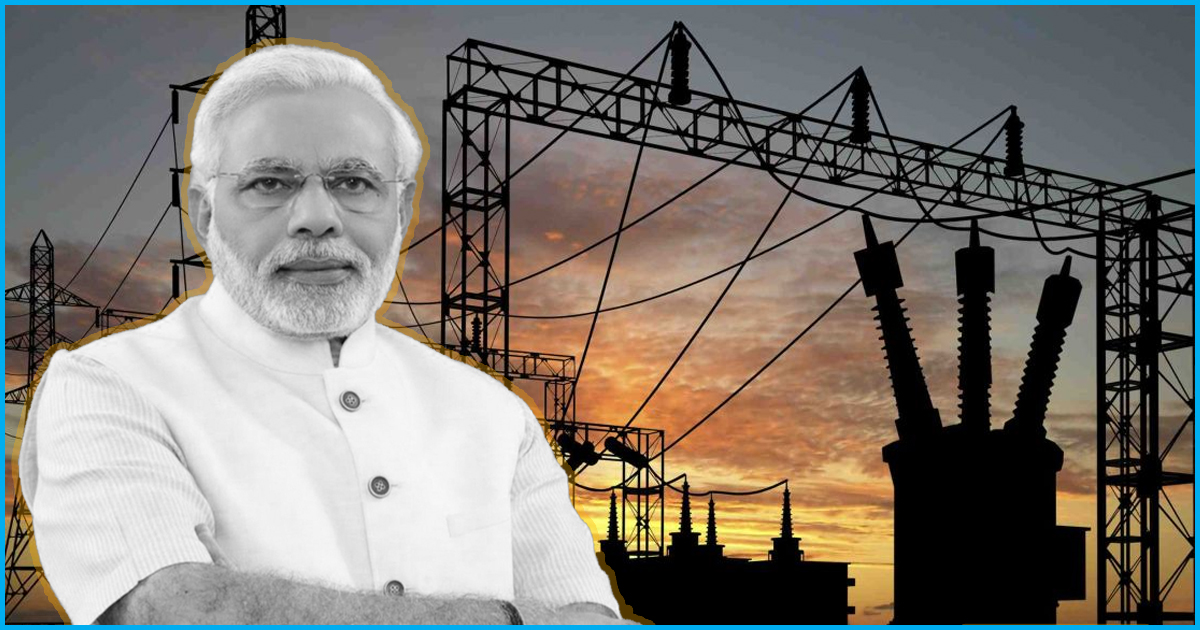
No, 100% Villages In India Are Not Electrified
10 May 2018 10:08 AM GMT
April 28, Prime Minister Narendra Modi said, will be remembered as a “historic day” in the development journey of India. He claimed that every single village in the country was now electrified.
28th April 2018 will be remembered as a historic day in the development journey of India. Yesterday, we fulfilled a commitment due to which the lives of several Indians will be transformed forever! I am delighted that every single village of India now has access to electricity.
— Narendra Modi (@narendramodi) April 29, 2018
In his 2015 Independence Day speech, PM Modi said that 18,752 villages in India are left to be electrified and that they would have power by May 2017. After missing the initial deadline, the feat, as per the government, was achieved this April.
Are 100% of India’s villages electrified?
No.
The ministry of power defines a village electrified if 10% of the total number of households in the village have electricity.
According to government data, 31 million rural households are still in the dark.
Rural electrification implies power cables from the grid reaching a transformer in each village and 10% of its households, as well as public places like schools, Panchayat office, health care, etc have access to electricity.

Note that villages are considered electrified if they have poles and distribution lines, even if non-functioning.
A resident of Sirathu village, Uttar Pradesh, replied to PM Modi’s 100% electrification claim on Twitter, saying that despite several requests electrification in his village is yet to be achieved.
I am sorry to say sir
This is not the correct information what is in circulation by government, still many villages are waiting for electrification work… I am also a resident of a village where electrification not done and on my several request I'm being asked to wait.— धीरेन्द्र पाण्डेय (@PanditDKP) April 29, 2018
The user, named Dhirendra Pandey, is also followed by the Prime Minister on Twitter.
He attached screenshots of the several emails he has sent to the energy minister, requesting him to electrify his village.
Ground investigation in many Odisha villages also found the same – villagers say they have never seen electricity in their lives and rely on oil-based lanterns.
News18 revealed that a few villages, just a few kilometres from the capital Patna, are also dependent on lanterns as they are electrified only on paper. State chief minister Nitish Kumar had on November 27, 2017, before the centre made an announcement, said that power supply in all revenue villages had been achieved. Many villages have poles and transformers but no electricity running in them.
A reality check by India Today found that many villages in Madhya Pradesh, Rajasthan and Jharkhand are yet to be electrified. As many as five villages on the banks of Narmada, dominated by Dalits, don’t know what electricity is. One of these villages has only seen a hollow electricity pole. Jharkhand CM Raghubar Das had claimed two years ago that electricity poles were installed in Saprum village, barely 90 km from Jharkhand. The poles, however, remain powerless.
The same was reported from the northeastern part of the country. News18 reported that children in the village of Tengasot have never seen a computer or a mobile phone and would most likely never find out such technology exists. In another village, Badaril, around 90 families have been living without electricity since independence.
Ravish Kumar of NDTV did a show highlighting the same.
Must watch : Ravish Kumar exposes Modi's claim of 100% Village Electrification.
Posted by Unofficial: Subramanian Swamy on Monday, April 30, 2018
India’s villages are yet to be electrified yet, last year the government promised electricity to nearly every household by 2019 under its $2.5 billion program, Saubhagya.
“The Saubhagya goal is very ambitious. To achieve the target by March 31, 2019, the connection rate should be 2.03 million households per month,” says Debajit Palit, associate director at The Energy And Resources Institute (TERI), reported Forbes. “However, data from Saubhagya portal indicates that around 0.73 million connections have been released per month from the launch of the scheme in last October to end of April.”
Less than a year left for the next Lok Sabha elections, it is pertinent we question the government failure to fulfill promises and feed us lies.
Electrification of villages since 1947
As per government records, there were about 1,500 electrified villages in India in 1947. This number reached 4,81,124 by 1991 but due to de-electrification of some of the villages this number came down to 4,74,982 by 2004, according to Central Electricity Authority of India (CEA).
Before the Modi government launched the Deendayal Upadhyaya Gram Jyoti Yojana (DDUGJY) in 2014, rural electrification programs were conducted under the UPA’s Rajiv Gandhi Grameen Vidyutikaran Yojana (RGGVY) launched in 2005.
Between 2005-14, the UPA-I and UPA-II government connected over 1,082,280 villages to the grid and access was provided to over 20 million households, out of which 19 million BPL families were given free connections. On an average, UPA government electrified 12,030 villages per year, leaving 18,452 villages for the Modi government.
 All section
All section













